Weekly round-up: 27 August - 02 September 2014
Mixed bag of weather, mixed bag of birds ~ that was the basic shakedown of the week.
The east coast enjoyed a couple more days of decent drift weather as the week began, holding on to a touch of east-nor’easterlies and some murk before the tiniest tail end of what was Hurricane Cristobel produced some windy weather southern areas as the weekend approached, brining some wet weather to many areas of Ireland and Britain too.
Once the front cleared through the North Sea, a reasonable high pressure system set itself up across the east coast once again, extending off to Scandinavia and beyond. Sunshine and the warmest temperatures for several weeks came with the high pressure, 24 and 25 degrees logged as the review period concluded.
Well, there we are ~ a little bit like the eponymous transport provided by Bus Éireann, no sooner does one Irish Swinhoe’s Storm-petrel come along, then it is swiftly followed by another…
Lead bird of last week, noted in far-from-classic conditions off Bridges of Ross on Bank Holiday Monday, it was the first record of this extreme rarity seen away from a net (or a delving hand in a burrow) since July 21st 2005 ~ when one spent a little time alongside the pelagic craft of Scilly. Indeed that, along with bird seen from the “M.V. Chalice” in 1988 were, until last week, the only birds seen away from a ringer’s gnarly mitt.
Three days later and Ireland’s IRBC has another land-observed record to play with ~ seen from Kerry Head during the afternoon of 28th ~ if accepted, it will become the second for the county, following the trapped and ringed bird found amongst the stones and hollows of Great Skellig Rock on July 1st 2001.
That’s two for Clare and two for Kerry. Where next? Mayo seems like a decent bet, or alternatively, a headland somewhere around Cork perhaps…
It seems fanciful to think that this is one-in-the-same (truly, what are the chances of that happening?) so perhaps 2o14 is a “good year” for the species. Two in four days seems exceptional but if there are two, could there be more? It would be worth a playful wager that there will be more records and claims in the next few weeks.
As an aside, the story of the Chalice petrel, for those who don’t know it, is well worth chasing down.
The cause of much ID debate over the course of almost two decades or so ~ Peter Harrison calling it as a Matsudaira’s Storm-petrel and that seemed to be the case for months and months to come (the few photos showing a monstrously gripping all dark, longish-winged petrel) but through the years, opinion changed as debate grew more and more vociferous (species mentioned included Markham’s and Tristram’s Storm-petrel).
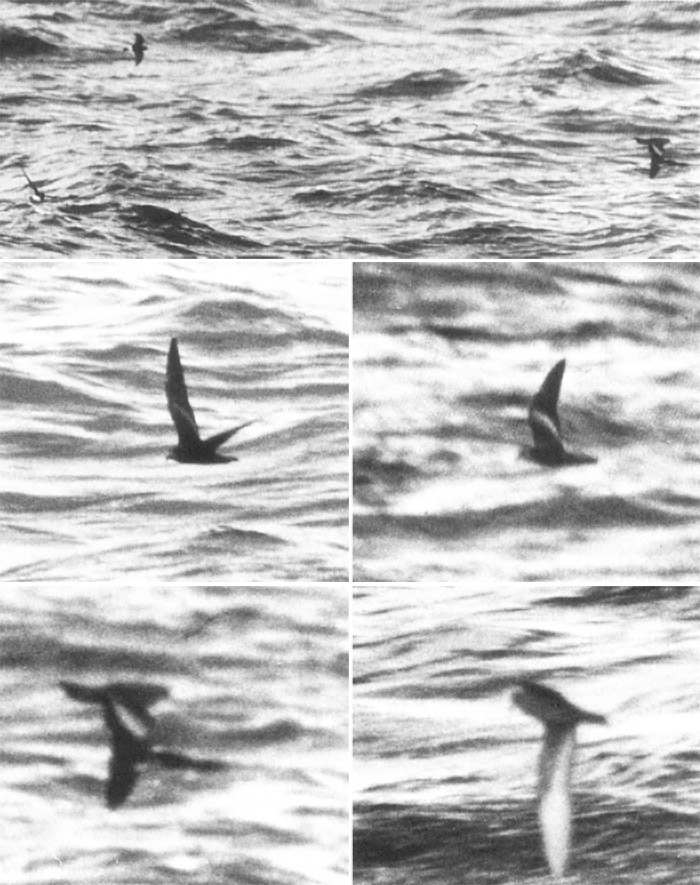
Swinhoe’s Storm-petrel has become the favoured identity for almost every seabirding expert now though, but the memory of ringing Birdline and hearing the words ”Matsudaira’s Storm-petrel” come down the phone line will always linger…utterly gobsmacked, upon hearing those words I scrabbled around for Harrison’s seminal guide and looked on in awe and wonderment at what was an outrageous claim.
Although it has never been a truly mega-rare bird, certainly not one that sees you rushing for a guide like a Matsudaira’s Storm-petrel would, but recently Marsh Sandpiper has become rather harder to see than of late.
This week saw a fresh juvenile drop on to the wetlands of Gloucestershire, found at Frampton-on-Severn on 28th to become a county first and a popular Thursday bird for those in the area. After a brief departure towards the expanse of the Severn Estuary, it was back for the evening and remained there to 30th.
You can read Martin McGill's account on finding this county first here.
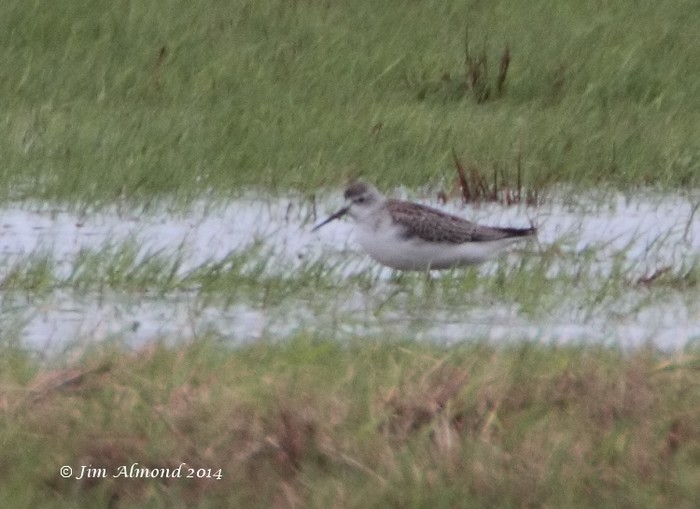
Twitchable birds have been pretty thin on the ground in the last three or four years ~ the remarkable wintering bird on the Outer Hebrides from December 2013 to January 2014 (appearing again in March) wouldn’t draw too many people to the far northwest of Britain and you have to go back three years for the last lingering bird ~ a commuting individual at that ~ moving between Lincolnshire’s Alkborough Flats and East Yorkshire’s Blacktoft Sands from July 11th to August 3rd 2011.
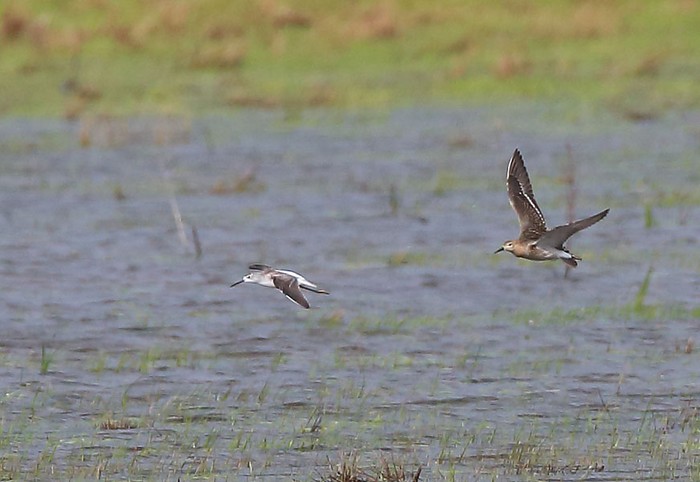
Before that, a 10 day adult was on Scilly in the summer of 2009 while the summer before saw a first-winter spent a week around the Maldon and Heybridge Basin and a juvenile was at Hickling Broad for almost two weeks at the same time of August 2008. There have been just 14 accepted records in the past decade, compared to 15 birds in the three years immediately proceeding them, to the turn of the millennium.
Coming back in this week, flying very much under the radar too, was the putative Eastern Common Tern, found again at the far west end of Scolt Head Island (Norfolk) on 29th and again over the weekend of 30th-31st.
The identification of the form longipennis, a certain split, in vagrancy terms (Certainly in the UK) is one that splits expert opinion down the middle ~ an area with little middle ground ~ birds such as the current returning Norfolk bird either are or aren’t the form. It is as simple as that.
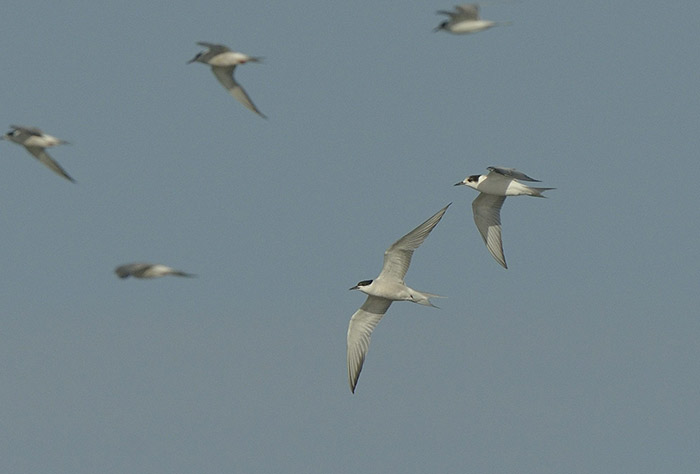
There’s no doubting just how striking the Scolt bird is ~ a beautiful looking individual ~ but whether it fits all the necessary criteria, or more to the point whether one of “our” Common Terns can match birds like this in appearance ~ is where the discussion on the form (in vagrancy terms at least) starts and finishes.
This particular bird was first seen on Scolt Head Island on May 19th and was detailed, with accompanying images in the RBA Round Up at the end of May. What must have been the same bird appeared on Cley’s Arnold’s Marsh on August 21st and was also noted off nearby Coastguards on August 26th too, before showing up on Scolt on 29th, 30th and 31st. Subsequently, it appears that the bird was again on Arnold's Marsh on the afternoon of 29th ~ where it was photographed ~ before heading back the few miles to Scolt.
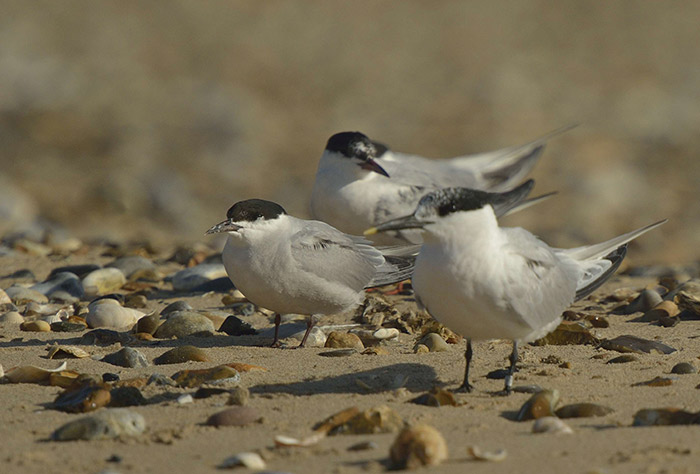
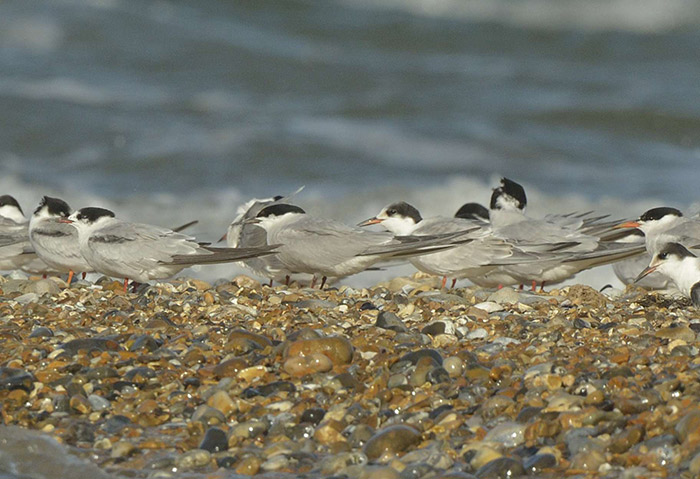
Interestingly, an odd dark-billed tern was noted off Burnham Overy dunes (within a decent stone’s throw of Scolt Head) on ABH Monday ~ whether it was the same bird is unknown, but it is quite some coincidence…
Quite where this particular Eastern Common Tern (-type) ends up is impossible to guess at ~ with this record and the bird (the same bird?) in Suffolk and Belgium within the past couple of years it means that, if nothing else, keen tern watchers in East Anglia have a little challenge in their midst.
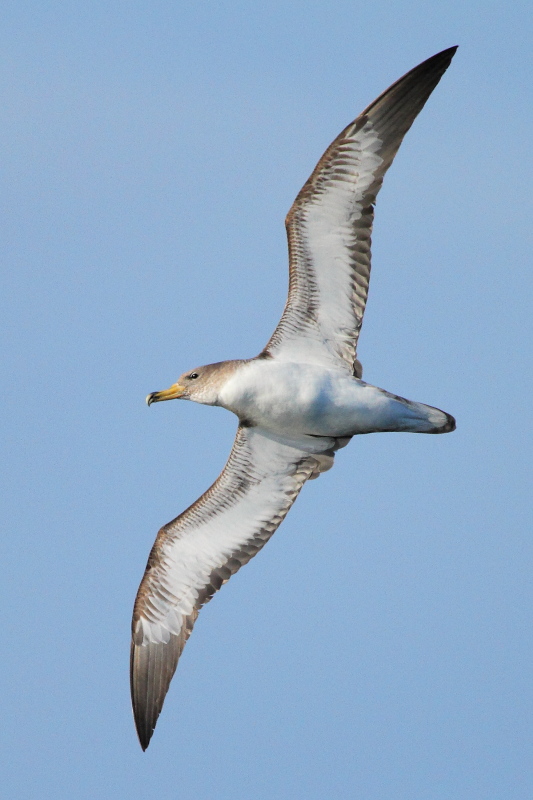
There was just one Wilson’s Storm-petrel recorded this week ~ seen from Bridges of Ross (Co. Clare) on 30th.
Something was most certainly stirring in the Western Approaches as the afternoon of 28th turned towards early evening ~ the accompanying weather front pushing hundreds of large shearwaters towards land and Cork’s Galley Head fared best of all.
In just three and a half hours, 488 Cory’s Shearwaters and 151 Great Shearwaters were logged between 5pm and 8.30pm. Around 70 Cory’s flew past Waterford’s Helvick Head while off Scilly, at least 48 Cory’s and 24 Greats were counted.
Earlier in the day, another 27 Great Shearwaters were seen from Galley Head (along with two more Cory’s Shearwaters) while eight of the former were seen at Porthgwarra and singles passed Cork’s Mizen Head and, off the coast of Highland, Brora and Rubha Reidh.
Other notable Cory’s Shearwaters this week included singles off Minsmere (Suffolk) and Filey (North Yorkshire) on 27th, a further eight of Cork, three off Strumble Head (Pembrokeshire) and seven more off Pendeen over three days (including four on 29th). Another eight followed through the rest of the week, including three south of Baltimore Beacon (Co. Cork) on 31st.
A few more Great Shearwaters were caught up in the tail end of Hurricane Cristobel as she headed way off to the north of us ~ 19 were seen from Pendeen on 29th, 11 passed Annagh Head (Co. Mayo) and seawatchers in Ireland also recorded six off Galley Head and seven off Bridges of Ross, while in Wales, birders at Strumble Head recorded four. The 30 or so birds seen on 30th were split across several of the sites just mentioned, 10 of them off Strumble, while Sligo managed two off Lenadoon Point. A further 10 were noted to the end of the week as seawatching conditions faded away to blue skies and easterlies.
Coming on strong behind the marvellous big shearwaters is Sabine’s Gull and in County Clare, birders at Bridges of Ross were treated to a minimum 43 birds on 29th while 12 headed by Kerry Head. The following day saw five trundle by BoR and it was ones and twos elsewhere through the rest of the week.
Five were recorded on 27th ~ two off Strumble, one for Bridges with other lone birds at Canvey Island (Essex) and Lowestoft (Suffolk). The only birds on 28th were two off Mizen Head (Co. Cork) and one at Dawlish Warren NNR (Devon) while outstanding business on 29th included one for Strumble Head and two for Pendeen.
Wexford, Galway and Donegal recorded single Sabine’s on 30th, along with a juvenile in Carbis Bay (Cornwall) and Ireand scored two more on 31st ~ again in Cork (this one off Baltimore) with another appearing off County Dublin, from the ferry to Holyhead. The final birds of a decent week for this uber-gull was seen off Kerry’s Slea Head on 31st, heading in to the Swale, on Sheppey (Kent) on 2nd, with a further five off Bridges of Ross on the same day too.
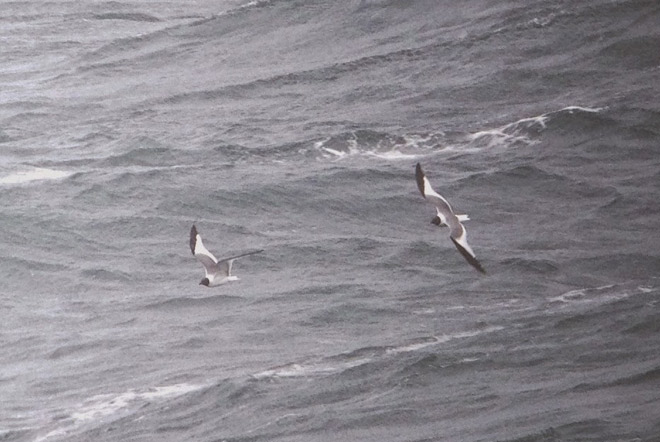
Up to 15 Long-tailed Skuas were logged during the week, with three each for North Yorkshire and County Durham on 27th and three for Rubha Reidh (Highland) on 28th. Singles were recorded in Lincolnshire, Fife, Mayo, Pembrokeshire and Lancashire to 31st, while singles were noted from Flamborough Head (East Yorkshire) on both 1st and 2nd.
Numbers of Pomarine Skuas fell by around half this week, from 65 to 38 ~ almost all being singles or twos, with five off Chanonry Point (Highland) on 28th being the only reasonable number reported anywhere.

Given that the generally indifferent seawatching weather of the tail end of the last review and the front end of this one managed to produce not one but two Swinhoe’s Storm-petrels and not a single Leach’s, it was nice to see the latter getting a little bit of action this week ~ one was off Rubha Reidh on 29th with three off Bridges of Ross the same day. The 30th saw 15 pass Bridges, but ne’er a dark rump was in sight.
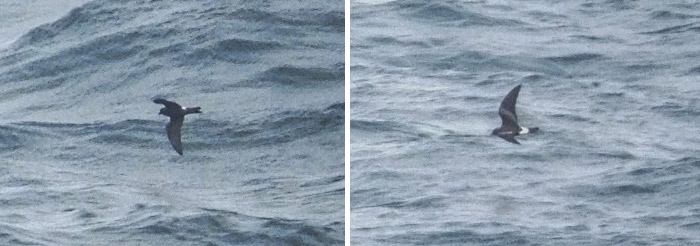
Five single Grey Phalaropes were made themselevs known this week ~ from Mizen Head (Co. Cork) on 28th, Strumble Head (Pembrokeshire) on 29th, Hurlestone Point (Somerset) and Kilcummin Head (Co. Mayo) on 30th and on the sea at Langstone Rock, Dawlish (Devon) on 31st.
The favourable weather moving through the English Channel finally brought a decent passage of Balearic Shearwaters ~ around 260 recorded countrywide but with the far southwest of England faring best (as you’d expect…).
The highest counts of the week were 74 from Prawle Point (Devon) on 30th, 53 from Porthgwarra (Cornwall) on 28th and 49 from Portland Bill (Dorset) on 30th with 31 there the previous day. Several other double figure counts came from spots in Devon and Cornwall. A handful of birds were seen in Ireland and strays made it to Aberdeenshire and East Yorkshire as well.
Last of all comes a report of a Little Auk off Barns Ness (Lothian) on 27th.
Very belated news first from Somerset where for another year it seems as though a pair of Little Bitterns were present around the Avalon Marshes during the summer. We await news from official sources as to whether they were successful or not.
Single new Glossy Ibis arrived at Dungeness RSPB (Kent) on 31st, in Wexford, at The Cull on 1st with another at Harrington (Northamptonshire) on the same date. Lingering birds remained, for much of the week, at Frampton Marsh RSPB (Lincolnshire), Wicken Fen NT (Cambridgeshire) and Pegwell Bay (Kent) while the bird seen in recent days around Saltholme Pools in Cleveland, took in a couple of other sites in the region this week, ending up at Stockton-upon-Tees on 31st.
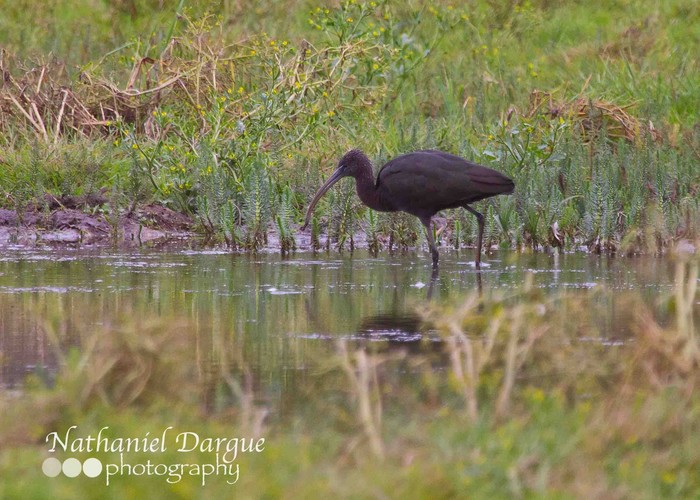
Some 36 Great White Egrets were spread across 20 counties this week. As usual it was the Somerset Levels that took the honours, eight at Meare Heath on 28th the highest number of the week. Up to six birds were seen at four site around Cambridgeshire (including three at Wicken Fen on 2nd), three singles were in Norfolk, two singles were in Kent and two birds remained at Leighton Moss RSPB (Lancashire) on 1st.
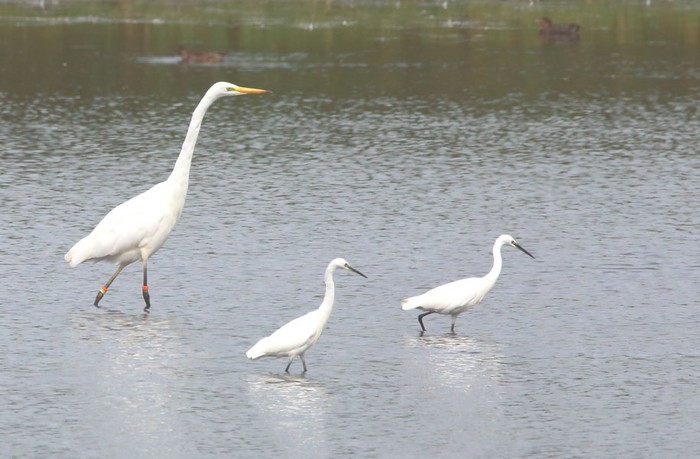
New Great Whites included one heading east past Strumble Head on 27th, at Southfield Reservoir (East Yorkshire) and around the Edderthorpe Flash area (South Yorkshire) on 29th, at Far Ings (Lincolnshire) on 30th and at a couple of sites in Nottinghamshire as the review period drew to a close.
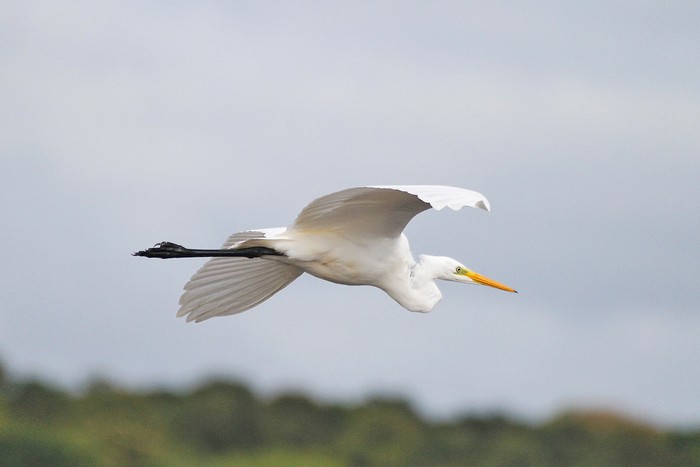
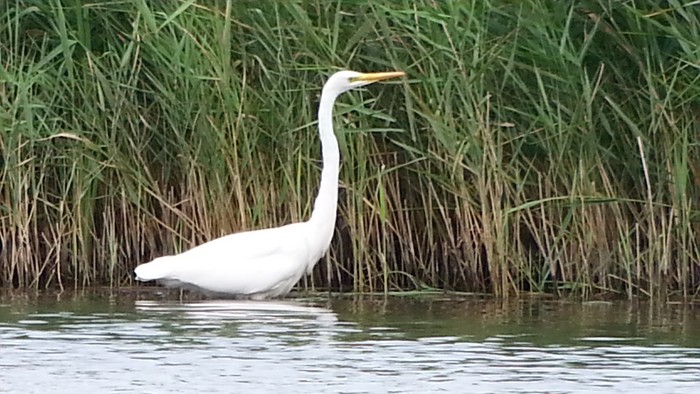
A Cattle Egret at Draycote Water (Warwickshire) was something of a surprise on 29th ~ the bird remaining throughout the day before departing to nearby Drayton Bassett (Staffordshire) on 31st. Inevitably, the near-resident bird at Hillsborough (Co. Down) was seen again heading to roost on 1st.
In Suffolk, a Purple Heron was seen briefly at Walberswick NNR on 30th.
The big numbers for Spoonbills were split between Norfolk and Dorset this week ~ 23 were counted at Stiffkey on 30th while 17 were around Poole Harbour from 31st (there was no news from Suffolk’s Havergate Island this week). Seven birds were at Titchwell RSPB (Norfolk) and five were at Gibraltar Point NNR (Lincolnshire) on 27th, while also of note were the trio seen heading over Sidcup (London) on 2nd.
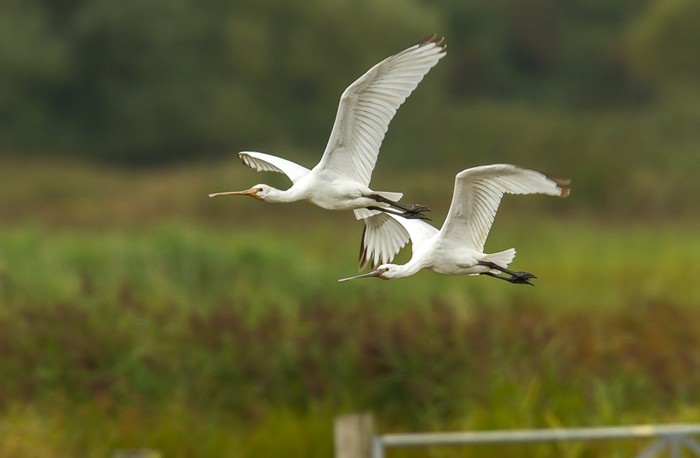
Only half a dozen Common Cranes were reported this week. The first was noted over Rye Harbour (East Sussex) on 28th and was followed by two still at the Ouse Washes RSPB (Cambridgeshire) on 30th, at Udale Bay (Highland) on 31st-2nd with the final duo still in place at Hatfield Moors (South Yorkshire) to 2nd.
The new review period began with a new Spotted Crake at Chew Valley Lake (Somerset) on 27th ~ one of five noted throughout the week. Further singles remained at Rutland Water (Leicestershire) and Bowling Green Marsh RSPB (Devon) to 29th and 30th respectively, while the bird found recently at Rainham Marshes RSPB (London) remained to all week. New on the same date was a “heard only” individual at Christchurch Harbour (Dorset).
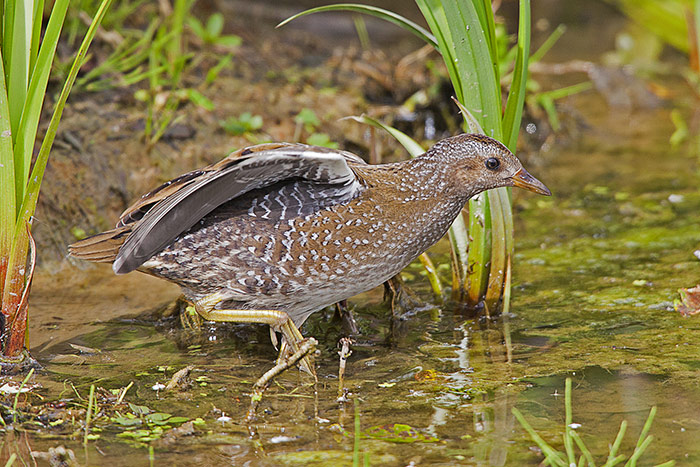
Migrant Corncrakes included perhaps two different birds at Winterton Dunes (Norfolk) ~ one was seen in the south dunes on 27th then, three days later, one was flushed in the North Dunes. Another Norfolk bird was reported from the cliffs at Trimingham on 29th. The final passage bird was noted at Kings Moss (Merseyside) on 1st.
The eclipse drake Lesser Scaup lingered at Chew Valley Lake to 28th while the female Ferruginous Duck at Minsmere RSPB (Suffolk) was holding station to 31st.
New for the week was a Ring-necked Duck on Meikle Loch (Aberdeenshire) on the final day of the review week, September 2nd which also saw two drake Surf Scoters still on the sea not too far from Meikle, off the coast at Murcar.
New Nearctic arrivals livened up WaderWorld this week ~ and another adult Stilt Sandpiper takes star billing with its late arrival at Tacumshin (Co. Wexford) on the evening of 2nd.
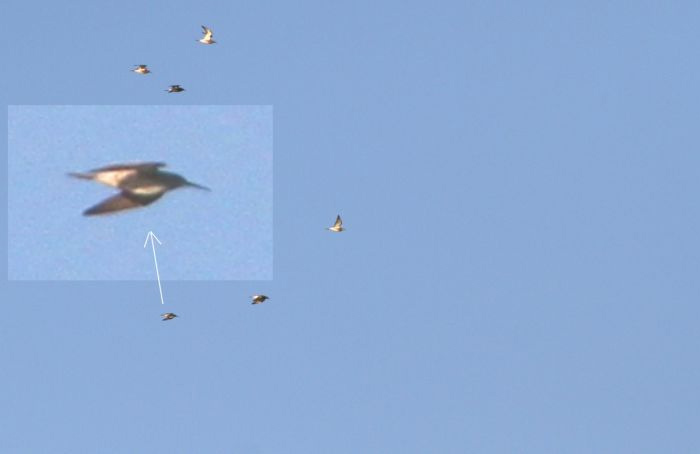
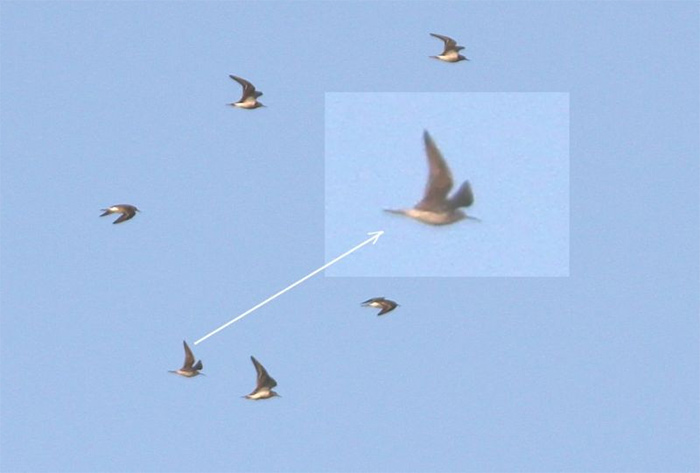
"High water level at Tacumshin right now and waders difficult to get to grips with. While crossing the wide body of water over to the patch a lot of birds started to get up. I latched on to a distant flock of Ruff in flight and noticed one smaller bird in their midst, too small to be a Reeve and with a rather peculiar shape (long-billed, long-legged) and lacking a wingbar. Though I wasn't able to determine any real plumage detail, it reminded me of a Stilt Sandpiper. I followed the climbing flock for ten or fifteen seconds, still not seeing much, other than a distinctive shape. When the birds turned to fly eastwards and passed high up at around 300m range I opted to try for some record shots in the hope that these might capture some details I was unable to register. They did! Unfortunately I didn't relocate the bird before it became dark, but hopefully it will linger a few days."
Killian Mullarney
This rather charismatic species doesn’t draw the gasps it would have done 20 years ago, but that shouldn’t detract from the it status as a very rare bird indeed here ~ 50 accepted birds to date and some of those are undoubtedly “repeats”. The Tacumshin bird is the sixth record for Wexford and the fourth for this remarkable site (others visiting in August 1983, October 1989 and, most recently, June 2009). Wexford has now passed Cork for Stilt Sandpiper records ~ until now they were level pegging on five each.
A juvenile Lesser Yellowlegs popped up on Croft Pascoe Pool, on the Lizard (Cornwall) on 29th where it stayed for the rest of the week (to 2nd) while a juvenile Baird’s Sandpiper was reported from Carr Lane Pools, Hale (Cheshire) on 28th (flying out in to the Mersey and not being seen again).
In Scotland, a White-rumped Sandpiper was found in Gott Bay, on Tiree (Argyll & Bute) on 31st (another was reported at Titchwell but details about that one are pretty scant).
Pectoral Sandpipers numbered 10 or 11 different birds this week ~ remnants from last week were at Freiston Shore RSPB (Lincolnshire) to 28th before it (or another went back to Frampton Marsh for 31st-1st) and again at The Cunnigar (Co. Waterford) to 28th.
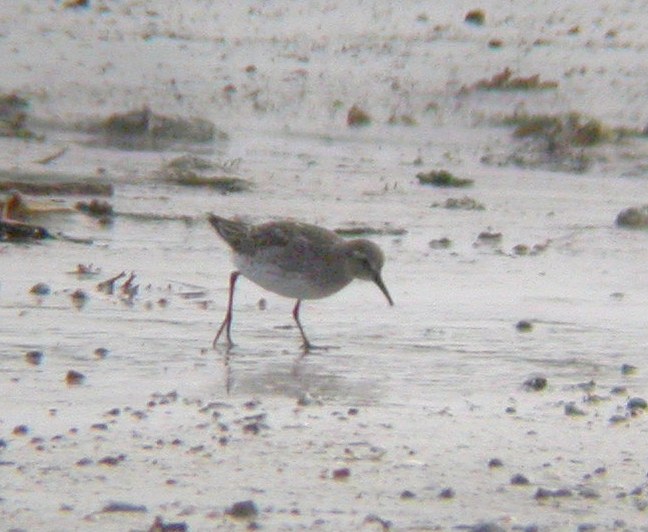
New individuals were seen at Abberton Reservoir (Essex) and Charlton Mires (Northumberland) on 27th, at Shibdon Pond, Gateshead (Co. Durham) from 28th, at Blankey Nook, Lough Swilly (Co. Donegal) and Cley NWT (Norfolk) on 30th, with the latter county’s second of the week appearing at Cantley Beet Factory on 31st (and this may well have been the bird seen at Buckenham Marshes RSPB on 2nd). The week concluded with two fresh juveniles at Ballycotton (Co. Cork) and another at Trabeg (Co. Kerry) on 2nd.
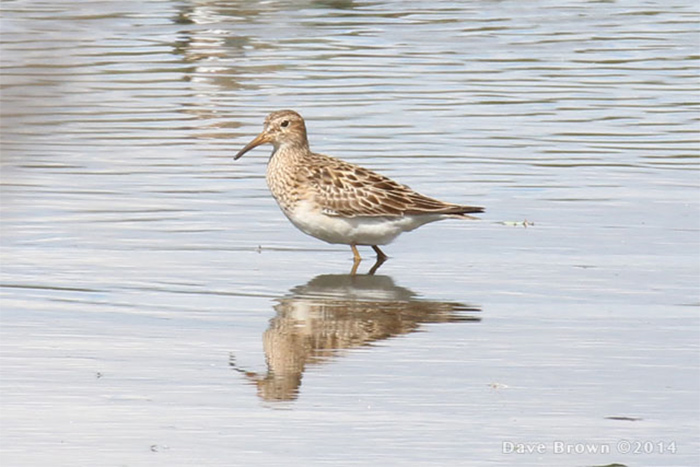
The sole Red-necked Phalarope recorded this week was a juvenile found at Dungeness RSPB on 27th, remaining on site to 30th. Four Temminck’s Stints included singles from last week still at Bowling Green Marsh RSPB (Devon) and Blacktoft Sands RSPB (East Yorkshire) ~ both seen to 28th ~ while the third arrived at Grafham Water (Cambridgeshire), also on 28th, where it stayed to 31st. The fourth and final bird of the week appeared at Frampton Marsh RSPB (Lincolnshire) on 2nd.
A flyover Dotterel over the Garrison, St. Mary’s (Scilly) on 27th got that particular ball rolling and it was followed by a further xx throughout the rest of the week. A juvenile was at North Warren RSPB (Suffolk) and seven were found in Hertfordshire, at Therfield also on 27th.
Back on Scilly, a Dotterel was noted around the airfield area on 29th and one was on South Ronaldsay (Orkney) as well. The limestone pavement of Conwy’s Great Orme saw a lone juvenile arrive on 30th (and was still there on 1st) and another was at Cleeve Hill (Gloucestershire) on 31st. The same day saw one arrive at Porthgwarra and it was joined by a second youngster on 1st, with both there again on 2nd with three more Dotterels on Dale Airfield (Pembrokehsire) the same day.
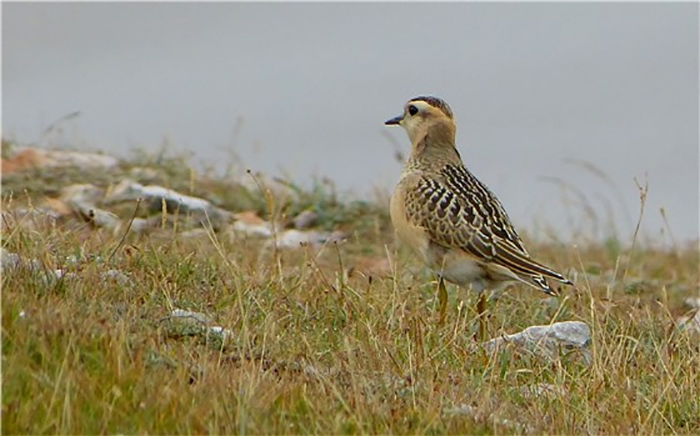
It has been a particularly slender early autumn for White-winged Black Terns, so it was nice to see news of a lovely juvenile appear at Coonagh NR (Co. Limerick) on 31st ~ a first record for the site and just the third-ever for the county as a whole (the first of which was shot in 1875...). A second juvenile was at Minsmere during the ealry evening of 2nd.
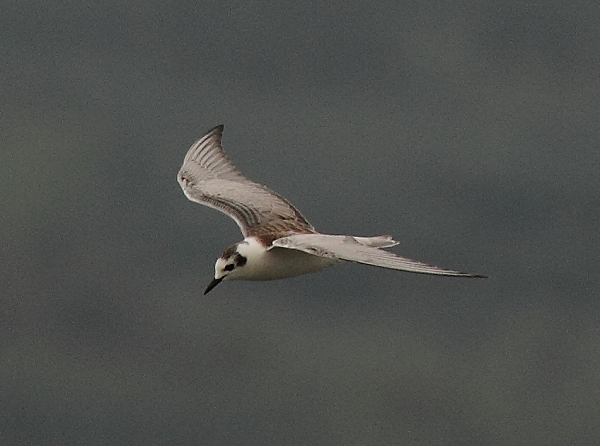
In Durham, the adult Bonaparte’s Gull was seen over gardens in Whitburn on 27th, while the second-winter Laughing Gull remained at Ballycotton (Co. Cork) to 1st at least.
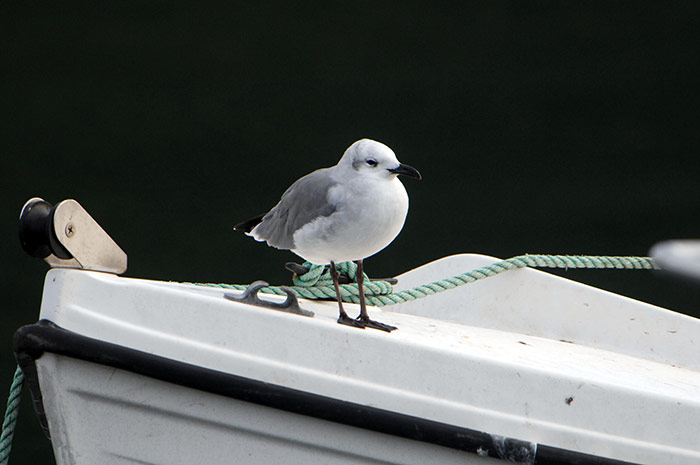
An adult Iceland Gull was found at Lossiemouth (Moray) on 29th and a Glaucous Gull arrived on Mainland Orkney, at Marwick on 1st.
Numbers of Caspian Gulls reported through the last seven days fell away from totals noted recently ~ a maximum of 23 birds recorded. Four were again at Walberswick (Suffolk) on 30th and three were at Spalford (Nottinghamshire) on 27th. Two juvenile cachinnans were again at Stanwick (Northamptonshire) on 27th while three singles were seen around Norfolk through the week, including a juvenile on Scolt Head Island on 30th and at least three (including two juveniles) were found around Flamborough Head (East Yorkshire). In Northumberland, the much-discussed fourth-winter Yellow PKCS remained at Amble to 30th at least.
A Pallid Harrier sighting is still pretty big news despite the remarkable surge in records across the past two decades. This week was no different when one was seen on Foula (Shetland) on 31st.
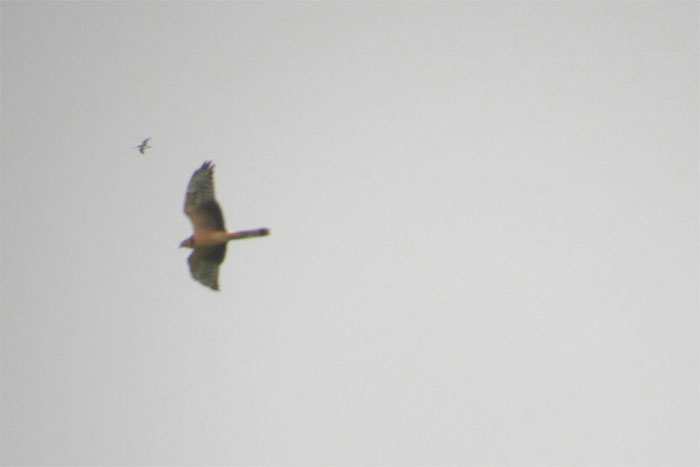
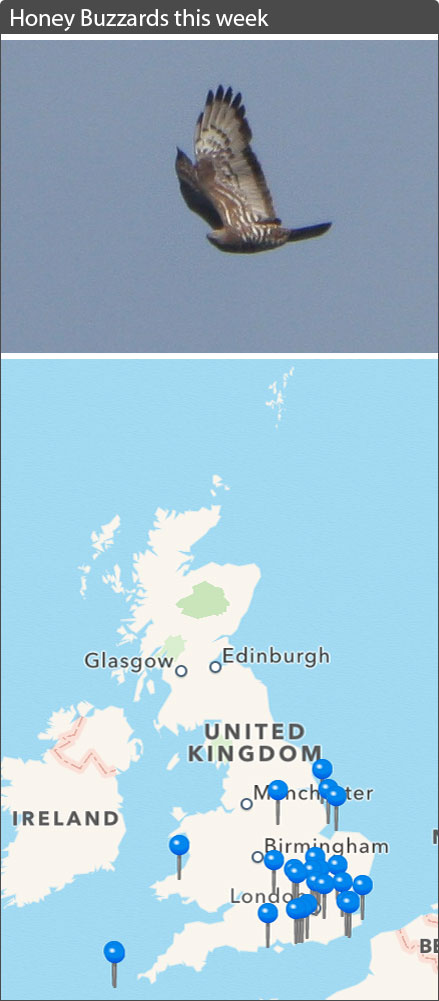
To the end of 2012, there were 68 accpeted records and Shetland held 23 of those ~ with that staggering invasion of 2011 accounting for 14 of those 23. The first modern day record of this enigmatic and once-mythical species for the islands was also the first-ever twitchable individual too ~ seen around Exnaboe on September 15th-16th 1993, a bird that was just the seventh for Britain (and was one of five accepted birds for that year).
Three Montagu’s Harriers were seen through the week as well, two in Kent (juveniles at Sittingbourne on 27th and Dungeness on 31st) with another seen in Hampshire, at Pennington Marshes, also on 31st.
The best day of the autumn to date for Honey Buzzards came on 27th ~ 11 birds seen including three over Gibraltar Point NNR (Lincolnshire), four in Kent (two at Dungeness and singles at Sevenoaks and near Sittingbourne), two were over various parts of London (at Selsdon and Wanstead) and further singles flew over Annesley Pit Top (Nottinghamshire) and Keyhaven (Hampshire).
Single birds were seen in Hertfordshire and Buckinghamshire on 29th, with six more following on 30th, including two together over Dungeness and two singles in West Sussex with singles also seen heading over Llandysul (Ceredigion) and Sandwich Bay (Kent). The last day of August saw the run continue, with 13 noted ~ five were in Kent, including separate twos over Dungeness and nearby Lydd, with one at Lade as well while West Sussex saw three more logged, including two over Climping with another at Bognor.
Two birds were noted on Scilly on 31st (one for St. Mary’s, one for Tresco) while further singles were noted in London, Essex and Norfolk. The week ended with one in Oxfordshire, at Farmoor and in Lincolnshire, at Donna Nook ~ bringing the total for the week to an impressive 34 birds in all.
Caught up amongst this little movement was an unconfirmed report of a (remarkably early) juvenile Rough-legged Buzzard at Chartham (Kent) on 30th.
Mention was made last week of a promising pulse of decent enough looking drift migrant conditions across the southern North Sea and the final day of the review period (26th) reflected the first set of arrivals that dropped on to assorted eastern coastlines.
The first day of the new review period (27th) saw the mini-fall continue and improve where some species were concerned, with Norfolk taking most of the honours….
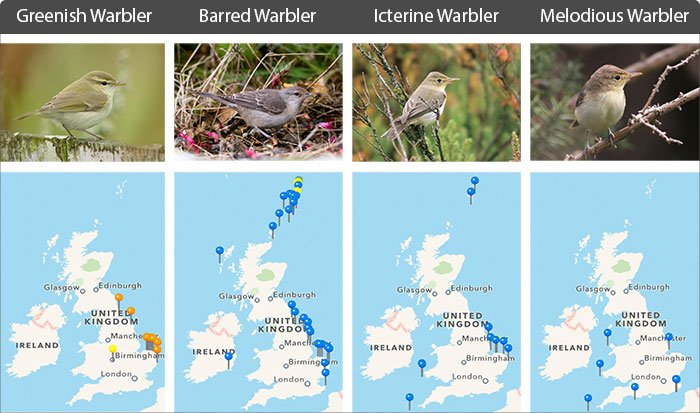
Up to five Greenish Warblers were reported around the north coast of the county through the day ~ the first was trapped and ringed on Weybourne Camp during the early morning and was followed by an elusive bird just to the west of Stiffkey (a bird that remained to 28th), a brief visitor through gardens at Northrepps, around the sizeable expanse of Wells Dell and over the saltings on the East Hills.
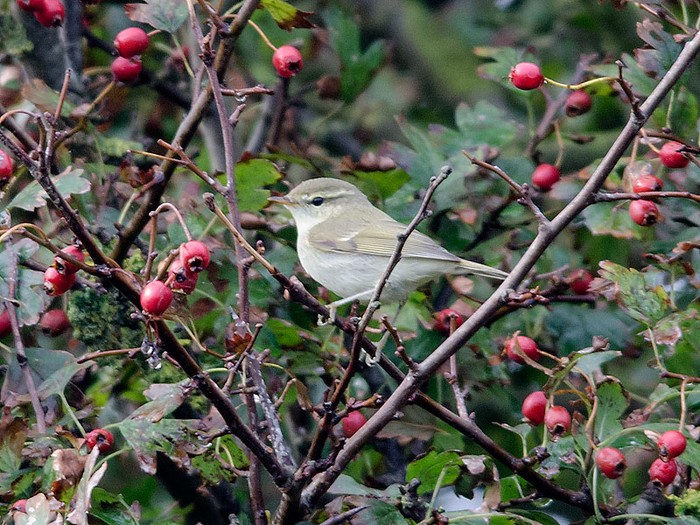
Norfolk’s sixth Greenish Warbler of the fall appeared in the Plantation on Blakeney Point on the morning of 28th while away from Norfolk, the same day saw another new arrival found at Scarborough (North Yorkshire) which was still present the following day. Back in Norfolk, what could be a seventh Greenish was heard at Cromer on 29th, while the eighth, a singing male, was located in the bushes around Winterton later the same day (where it remained to 30th).
Further to the south, down in to Suffolk and also on 29th, another new Greenish was found at Southwold, with a second bird discovered the next day ~ bringing a four-day total to a figure of up to 11. Meanwhile, one of the forerunners of this little burst of wing-barred activity, the bird at Whitburn, found at the end of the last review period, remained until 27th ~ before reappearing, in song, quarter of a mile away, on 2nd.
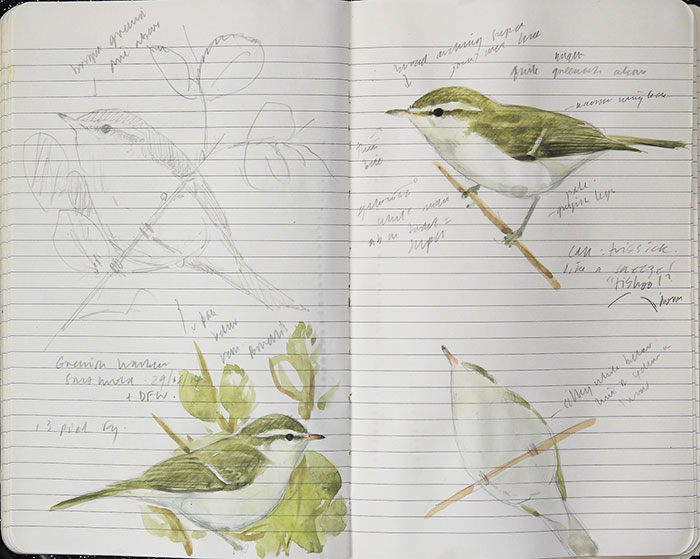
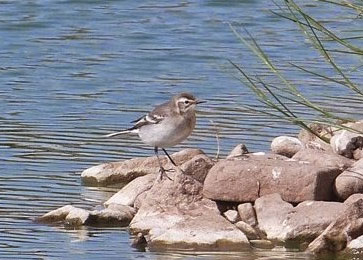
Given the weather Citrine Wagtail was a pretty straight forward prediction last week and it came as little surprise to see news of a first-winter dropping on to Brownsman Island, Farnes (Northumberland) on 27th ~ arriving exactly a year to the day since the last young bird on the island group (last year’s August 27th bird was on Inner Farne) ~ and it is also the second for the county this month (after an early bird at Grindon Lough on 9th.
The second and third new Citrine Wagtails of the mini-fall conditions were found on 28th ~ at Nigg Bay (Aberdeenshire) and Barns Ness (Lothian). The former county has, surprisingly, just one accepted record on the books (at Girdleness in September 1998, although singles were reported in the autumns of 2008 and ’09) while the latter boasts six to date, the most recent coming at the same site as this week’s bird, Barns Ness, on September 21st-22nd 2012.
Two different Icterine Warblers were noted around the Spurn Peninsula on 27th-28th ~ the first was trapped and ringed at Kilnsea and the second, also trapped and ringed, appeared the day after at Church Field. Two more were reported on the Norfolk coast on 27th, at Sidestrand and in Wells Woods, while the fifth of the two day period saw one make landfall at Corton (Suffolk) on 28th.
Whether the Melodious Warbler found at Dungeness on 27th was part of the east coast arrival above is perhaps a touch contentious ~ but it seems to have shown well whilst present, lingering on to 29th.
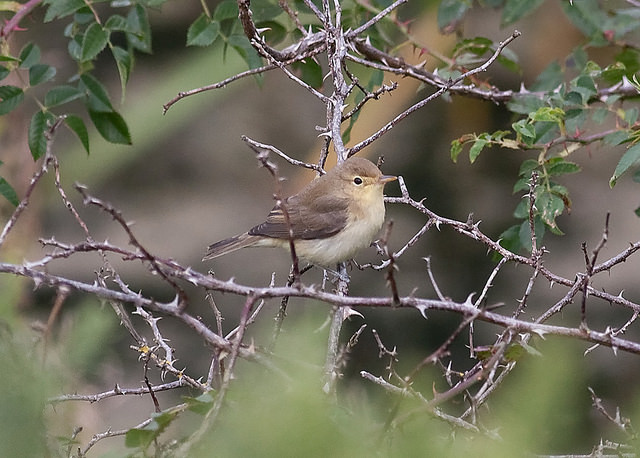
As has been the case with the last couple of weeks, most of the Common Rosefinches found at the start of the latest review period arrived in the Northern Isles. Four birds were found on both North Ronaldsay and Fair Isle on 27th, with a further Orkney individual found on Sanday the same day, while two Mainland Shetland birds arrived at Pool of Virkie and Wester Quarff. The twelfth bird of the day was found further south, on the Isle of May (Fife). On 28th, the total for the “fall” edged up to thirteen with Norfolk’s first of the autumn ~ reported briefly on Blakeney Point while Fair Isle continued to host three birds.
New Barred Warblers on 27th came to the bushes on Burnham Overy dunes (Norfolk) and also at Landguard NR (Suffolk), with two more on Fair Isle, while lingerers were still at Eccles-on-Sea (Norfolk) and Flamborough Head (East Yorkshire). Six more new individuals came to Margate (Kent), Salthouse (Norfolk), Grimston (East Yorkshire) South Gare (Cleveland) and Foula (Shetland ~ two birds there ~ on 28th, taking the total for the two days to nice.
Barred Warbler-HD 720p from dave tucker on Vimeo.
Wrynecks featured on Day 1 of the fall last week and the next couple of days saw many more arrive to push the tally well on in to mid-range double figures. At least 30 birds were noted from Dorset to Durham and up on to Shetland on 27th-28th alone ~ at least 11 were seen in East Anglia (six or more for Norfolk ~ including three on Blakeney Point on 27th) and at least four in Suffolk (including at least three at Minsmere on 28th).
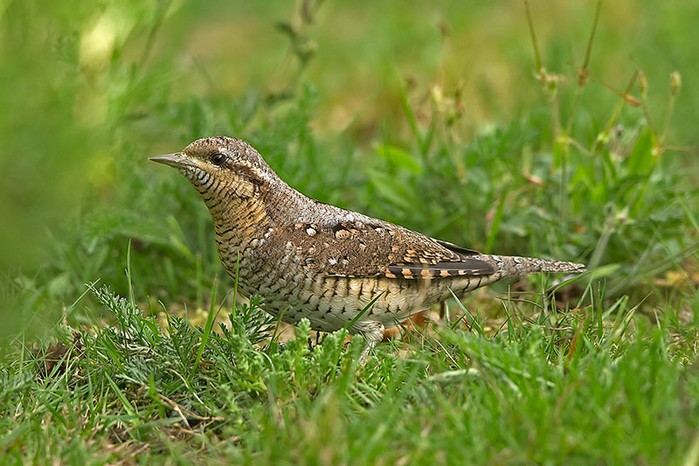
Up to nine birds were found around the southeast, including five in Kent, with two at Margate on 28th) along with two in Essex (at Holland Haven and Frinton-on-Sea, both on 27th) with singles in Hampshire and West Sussex). At least half a dozen Wrynecks were logged in the northeast, including a two or three around Spurn and Easington, with two in Lincolnshire (at Gibraltar Point and Saltfleet) with one at Horden (Co. Durham) on 27th. Three singles were on Shetland on 27th (at Rerwick, Quendale and on Fair Isle) whilst North Ronaldsay collected one the following day.
With the winds heading to a brisk southwesterly by 29th, fewer new birds were seen ~ a Wryneck in the south dunes at Winterton (Norfolk) was probably new, likewise singles on South Ronaldsay and Sanday (Orkney) and at Dungeness RSPB. The same day also saw two more appear on Fair Isle and three further singles appeared elsewhere on Shetland.
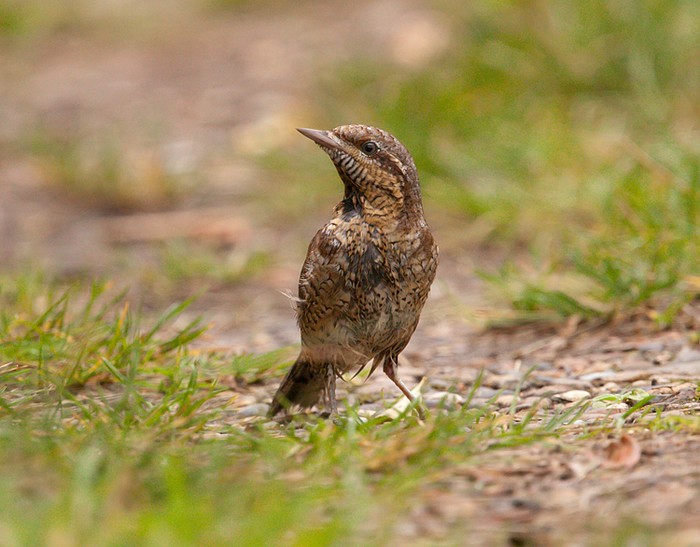
With some decent numbers of several classic drift species, it was a little surprising that so few Red-backed Shrikes were associated with the favourable conditions ~ a juvenile at Kelling Water Meadow (Norfolk) and another single on Fair Isle being the only new birds on 27th while further juveniles followed at Corton (Suffolk) on 28th and Spurn (East Yorkshire) and North Ronaldsay on 29th. Elsewhere in Norfolk, the lingering male remained at Winterton until 28th.
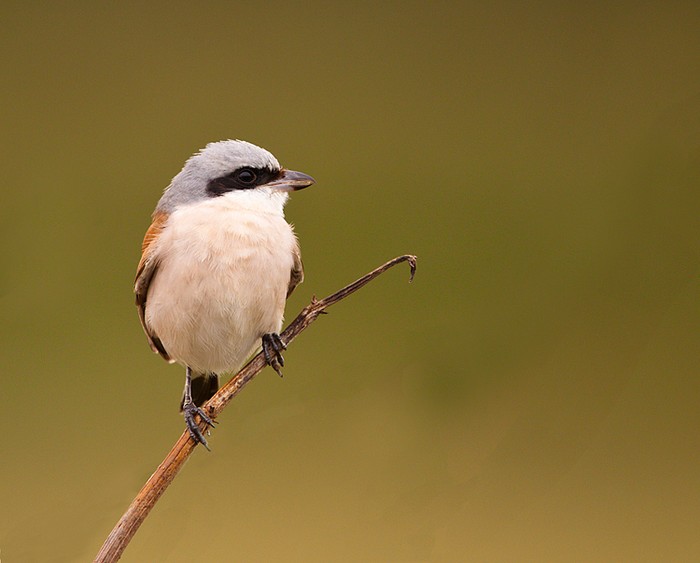
Also caught up in amongst the mix of fall birds were lone Ortolan Buntings that spent short spells at Reculver (Kent) on 28th and Long Nab, Burniston (North Yorkshire) on 29th, while the 27th saw an early-ish Red-breasted Flycatcher pop up in Essex, seen at the west end of Walton-on-the-Naze.
New too was the Eastern Subalpine Warbler found at Landguard NR (Suffolk) on 29th ~ either of the two “regularly” occurring species of Subalpine Warbler are still a rare birds in the county ~ there have been just three others recorded in the county in the past decade ~ an unassigned first-summer male was seen on Westleton Heath on May 10th 2008, with a first-summer male Western Subalpine appearing at Landguard later the same month.
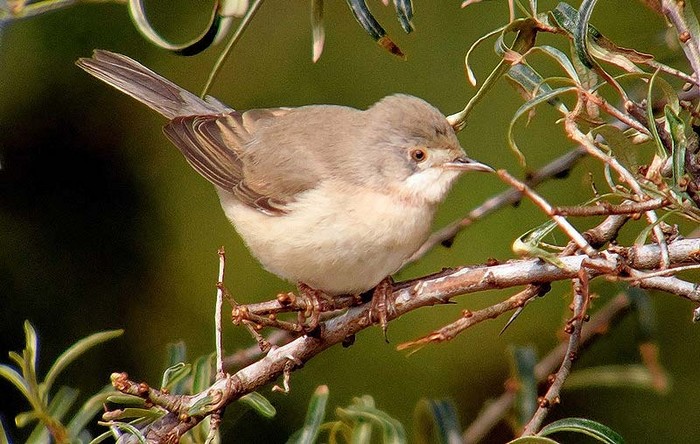
The most recent record of any of the three species prior to this week’s arrival was last spring, again at Landguard, when a male Eastern spent April 26th-27th on site. This week’s female, which was the subject of some debate as to precisely what sort of Sub-A it really was, remained to 2nd.
As a brief aside, DNA analysis of a female Subalpine Warbler on Fair Isle from May 16th-27th 2014 has been shown to be a Moltoni’s ~ the first confirmed record of this imminent split for Britain (although singing Shetland male Moltoni’s are also in the mix and, when accepted, will pre-date the Fair Isle bird).
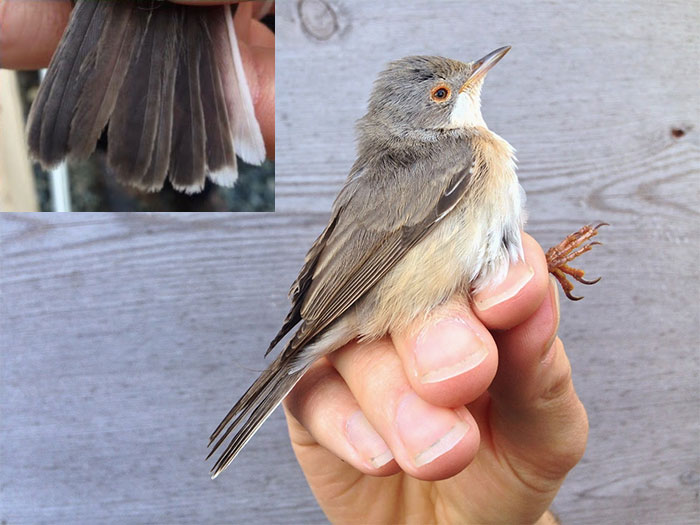
Potentially a fine armchair tick for anyone who saw the Fair Isle bird then, though having the identity confirmed by a lab and not in the field makes it a rather unappealing tick in a purist identification kind of way.
As the first pulse of (generally) eastern drifters eased a little as the weekend approached, it didn’t take long for things to a) pick up again and b) improve considereably on what was an already enteratining mix of species.
It’s tricky to know precisely where to start, but given that the pick of the bunch were generally all from the same general family, so let’s crack on and get in to all the news relating to perennial favourites, warblers.
Leading the way comes the Paddyfield Warbler trapped and ringed on Whalsay (Shetland) on 1st ~ a species that is, near as damn it ~ knocking rat-a-tat-tat style on the door of 100 accepted records now, with a third of those (more actually) appearing on Shetland itself.
Whalsay itself has a meagre three recent records, trapped in June 2006, trapped in August 2008 and now trapped in September 2014. All three birds have been at Skaw and this one is the first of the year to date.
Next up comes Booted Warbler and we flit from Shetland to Orkney and to The Bu, on Birsay where the 30th saw the discovery of the second record of the year, just a fortnight or so after the first that was found on the island mentioned above ~ Whalsay, on Shetland.
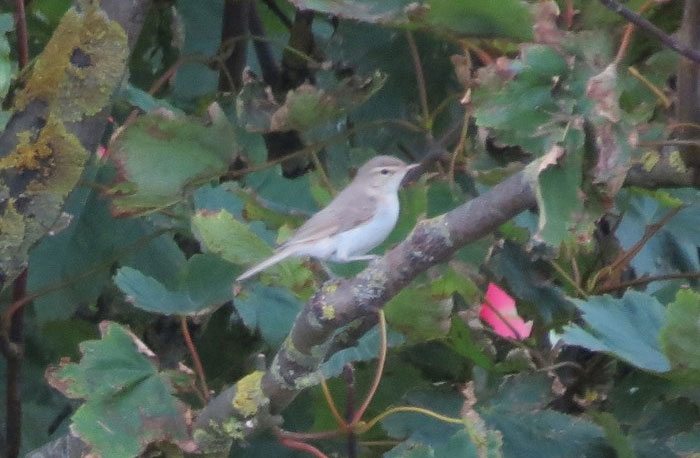
This particular Orkney bird is just the fourth for the islands (compare that to the 40+ for the near neighbours to the north) and comes just a couple of years after the most recent record, one trapped and ringed on North Ronaldsay in mid-August 2012. Prior to that, you have to go back to September 1993, when a one-day bird was found on North Ronaldsay, while the first for Orcadian birders to go at came on September 3rd-4th 1988, this one seen on South Ronaldsay.
In the last two reviews we’ve touched on the rise and rise of Blyth’s Reed Warbler, thanks to a quartet of records in August that started with two birds within three days on Fair Isle mid-month, followed by two further Shetland records, one for Unst, the other for Foula, last week. Now we have two more August birds ~ and both came on the mainland…
...and both were found on 30th ~ the first trapped and ringed at Orford Ness (Suffolk) with the second following soon afterwards at Logie Buchan (Aberdeenshire). The species is, perhaps surprisingly, still very rare in both counties with Suffolk currently still having just two accepted records to date ~ both of them coming along within a fortnight or so in the autumn of 1993 and both of them at Fagbury Cliff, near Felixstowe ~ whilst Aberdeenshire has just one accepted record so far, one trapped at Foveran in September 2010 (although a singing male was seen at the ned of May this year at Girdle Ness).
Blyth's Reed Warbler from David Fairhurst on Vimeo.
The third bird of the week and the first for September ’14 was found near the tennis courts on Bryher (Scilly) on 2nd, potentailly the fifth for the islands, the second for Bryher (after one in October 2007) and the first Scilly record outside of October.
Prior to this August, as mentioned here of late, there had been just three previous August Blyth’s Reed Warblers (on Shetland in 1985, in Northumberland in 1991 and Cheshire in 2000) ~ 2014 has taken that figure and run with it, tripling the numbers in an impressive run of form for a species that seemingly knows no bounds.
In stark contrast to its congener, Marsh Warbler is an Acro that continues to lag behind the BBRC species-list bird. The second for August arrived at Gulberwick, Mainland (Shetland) on 30th and follows one on Fair Isle mid-month.
Phylloscopus-time now and after a very tidy showing from the commoner Greenish cousin, it was nice to see a couple more Arctic Warblers make landfall this week ~ these splendidly chunky things always give a tingle of excitement when they pop up and although they invariably rock up on Shetland (just as this week’s duo did), they ensure that anyone being lucky enough to come across a wing-barred warbler makes all the necessary checks.
The first bird this week was found on Foula on 29th with the second coming along on 1st on Whalsay (a nice day there...) and edges the Shetland haul ever-closer to the 200 mark (they’re roughly a ten or so short right now) ~ great going given the overall figure of 340+ in all.

One of the surprise birds of a slack mid-month just gone was the gleaming, mossy toned Western Bonelli’s Warbler at Portland Bill. This week saw two more arrive (on dates that are a tad more conventional) and at least one location didn’t come as much of a surprise…
…and that spot was Scilly where a Western Bonelli’s Warbler was found at Content, on St. Mary’s on 29th (where it was noted as singing the following day for good measure). Bird two was found off the coast of north Wales, on Bardsey Island, on 31st and it continued the island’s utter dominance for the Principality and, in particular, Gwynedd.
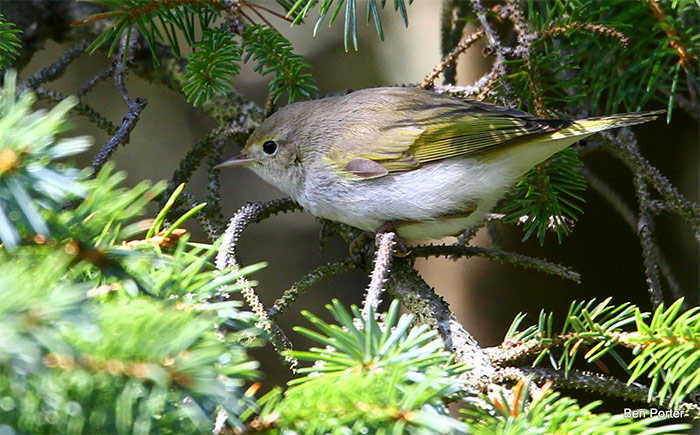
So far, there have been seven accepted records for the northern county and all of those have been discovered on Bardsey. The first two were found within less than a month of each other in the autumn of 1959. The third and fourth birds came within a fortnight of each other in early September 1962 and then came a gap of 22 years until the next Bardsey bird ~ trapped on August 20th 1984. The sixth bird came after a second 22 year gap (Yay! Symmetry!) in September 2006 with the most recent individual coming along on September 1st 2011.
There has also been one record of a Bonelli’s Warbler sp., for Gwynedd, seen at Llaniestyn in September 1968.
We’ve already made mention of nine beefy Barred Warblers through the fall-first-phase. That was a tidy number for a couple of days but that figure would leap up across the weekend with, unsurprisingly, the Northern Isles faring particularly well.
The 30th saw four birds noted around Orkney, with three for North Ronaldsay and one on South Ronaldsay, at Hestily, while a minimum three were on Shetland, a single on Noss with two on Fair Isle. The latter island would dominate proceedings on 31st when a monster 10 birds were counted around the fabled birding hotspot while elsewhere around Shetland four Barred Warblers were seen on Unst, three were on Whalsay and three were on Mainland (at Exnaboe, Walls and Gulberwick).
Further singles were found on the Outer Hebrides, at Grenitote on North Uist, in Ireland, at Hook Head in Wexford, in Norfolk where one was seen at Stiffkey and also in North Yorkshire, another new bird discovered at Long Nab, Burniston to make a day-total of 21. Two followed on the first day of the new month, both in East Yorkshire, at Grimston and Spurn to take the week’s haul to an impressive 42, with a second bird at Spurn on 2nd. Two more followed later the same day ~ at Winterton and coming “in-off” at South Shields (Co. Durham).
Finally for the warblers, in addition to the five seen earlier in the week, five more Icterine Warblers were found; the first of these was on Whalsay on 30th and was followed by one was seen around the Garrison on St. Mary’s (Scilly) on 31st while there was one each for near-neighbours Skokholm and Skomer (Pembrokeshire) on 2nd, with another on Shetland the same day, seen at Virkie.
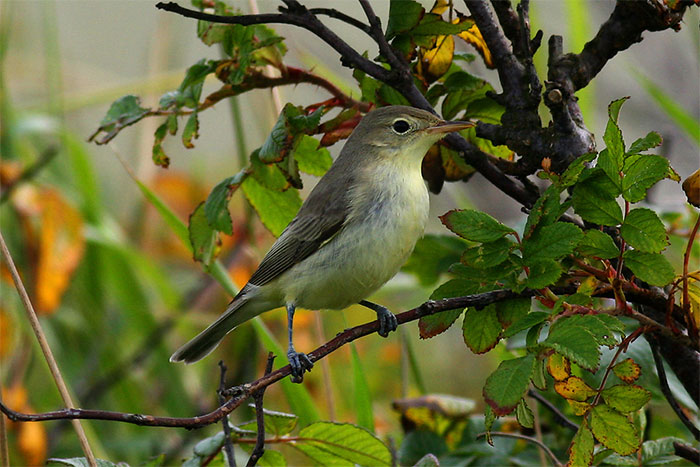
Two more Melodious Warblers also made themselves known ~ one was seen in the Top Fields, at Portland for 20 minutes on 30th while Anglesey’s first since August 2005 was found at South Stack RSPB on 31st.
It wasn’t all flicky little tree huggers that made up the news this week, there was a nice array of oddments to swell the impressive ranks. In Kent, a Tawny Pipit was found at Hope Point on 30th and a Red-throated Pipit (an increasingly rare visitor here…) headed over Bardsey on 1st.
The week’s second Ortolan Bunting spent some time around the buildings on Skomer on 2nd. On Shetland, a Short-toed Lark was seen on Fair Isle on 30th-31st and another was seen at Saltfleetby (Lincolnshire) on 2nd, while the fourth Citrine Wagtail of a busy review was found at Howmore, South Uist (Outer Hebrides) on 31st where it remained to 2nd.
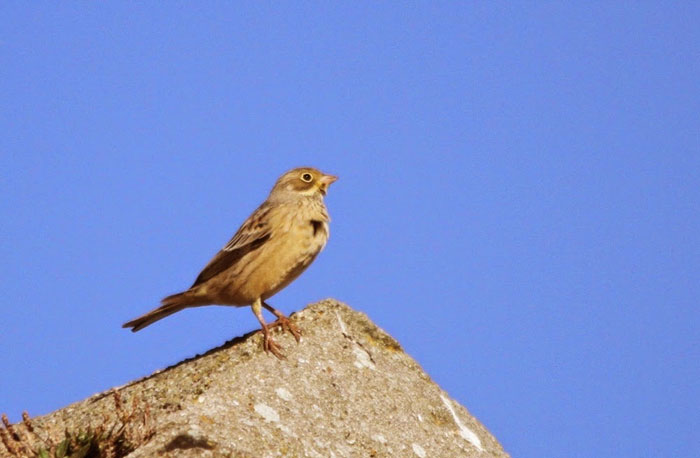
Citrine Wagtail remains a rare bird on the Hebs ~ there are seven accepted records to date, with three for St. Kilda (including the first and second for the island group, in September 1992 and October 1995), two for North Uist and two for Barra ~ so this week’s bird becomes a “first” for South Uist.
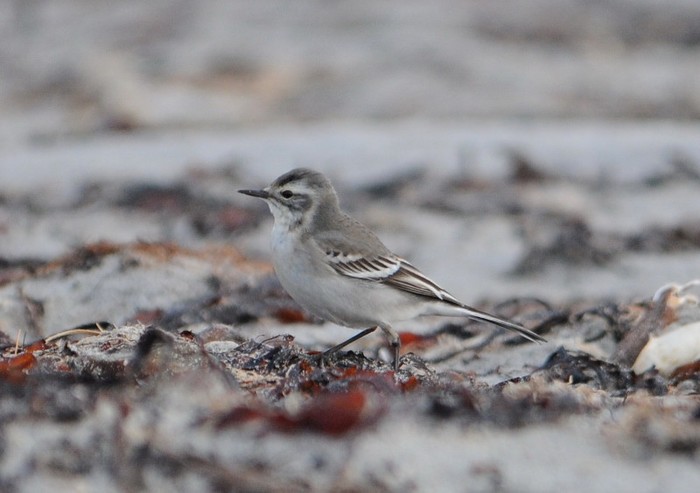
The first day of the new month brought a rather moth-eaten and faded Woodchat Shrike at Prestwick Carr (Northumberland) while in addition to the half dozen Red-backed Shrikes that arrived during the first couple of days of the week, three second-phase fall birds appeared on Shetland, at Baltasound and Northwick on Unst on 30th and 31st, with the latter date seeing one appear on Fair Isle. Norfolk then hosted another in the Broads, seen at Horsey on 2nd.
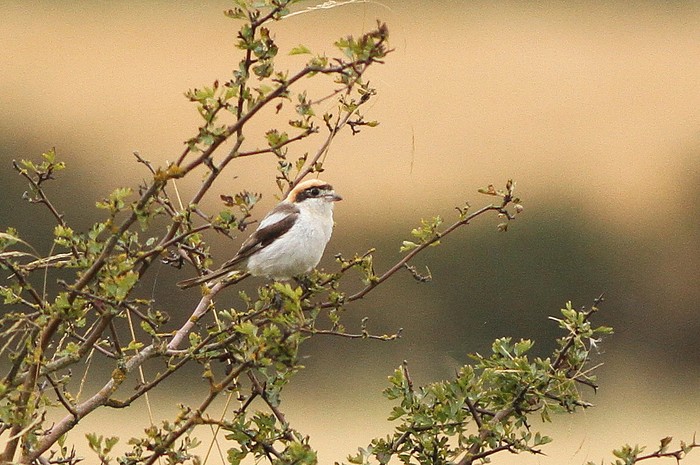
One of the big showers of the initial fall was Wryneck, with up to 40 birds seen between 27th-29th. The next few days yielded more too ~ seven were recorded (with four on Shetland and two in Hampshire) on 30th while 31st saw up to 19 recorded through the day including four on Fair Isle, four in Kent and two a piece for East Sussex and Essex. Seven more birds on 1st (including three more on Shetland) took the total racing towards 70 for the week and that total was passed with ease due to the appearance of singles at Marazion (Cornwall), Doleby Warren (Somerset), Wormwood Scrubs (London) and Aldeburgh (Suffolk), all on 2nd (along with a dead bird on Deerness, Orkney).
Common Rosefinches also had a second coming through the second part of the week too ~ a further six added to Shetland’s total, with two twos around Unst on 29th-30th, with singles at Quendale and Sandwick on 30th-31st. Three remained on Fair Isle and at least four were present on North Ronaldsay across the weekend. The only bird further south was a brief juvenile on feeders in Sheringham (Norfolk) on 31st.
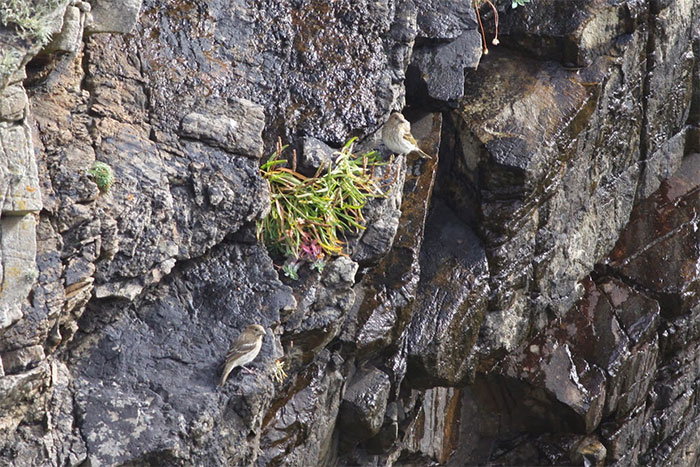
A juvenile Rose-coloured Starling was found at Dawlish Warren (Devon) on 31st whilst an adult at Weybourne (Norfolk), also found on 31st, was the cause of some unpleasant behaviour from some birders on site towards local residents. The rozzers were called and it wasn’t a very clever scene at all. The bird remained to 2nd and it was all a bit more friendly but that’ll be the end of news from that particular area for sure…
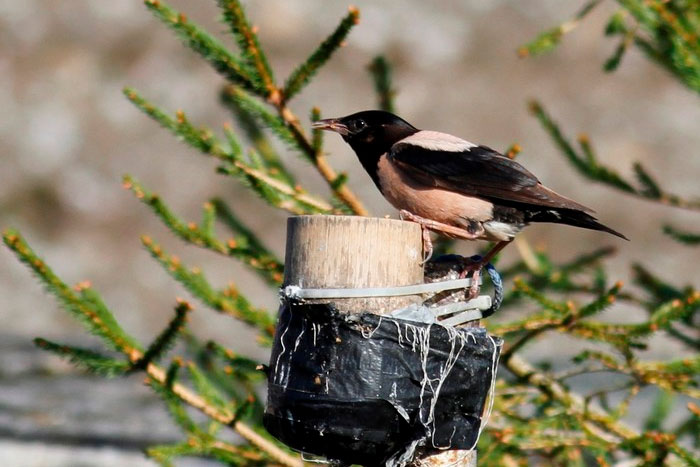
The penultimate bird of the week is the still present Rustic Bunting that remained on Unst to 30th, just shy of a full month on site.
Finally, the Isle of Wight Bee-eaters. Eight juveniles from two pairs in one burrow was indeed the final scores-on-the-doors from the Wydcombe Estate NT watchpoint ~ a dozen plus were still on site on 27th, dropping to two the next day and then…they were all gone.
What a super success story that’s been and it’s a fitting conclusion to this week’s news.
There we are then ~ the first beast of a review for the autumn draws to a close ~ what’s on the cards next week? Well, the ridge of high pressure looks set to stay in place for almost all the seven days that lie ahead. Easterlies come with that sun, so it would seem appropriate that more of the same will be on the cards, drift migrants and some of the rarer species noted this week must all be on the cards…
We could see more Citrine Wagtails find their way across the North Sea, another Booted Warbler or two perhaps, more Blyth’s Reeds and further arrivals of perhaps Greenish and even Arctic Warblers.
In the “old days” weather such as we have now could have tempted a Yellow-breasted Bunting our way ~ indeed we’re in what could be seen as prime-time for this increasingly hard-to-see species. Six have been seen on past September 3rd’s (including three since 2000, the last on Portland in 2003). Eight have appeared on September 4th, nine on the 5th, five on 6th, six on 7th, nine on 8th and a monster 13 on 9th.
With conditions as they are, it seems as though this is one species to really keep an eye open for…
…as is an early Lanceolated Warbler ~ a handful of which have been seen in the first few days of September/ With conditions as they are, there’s a chance that Shetland could land one any day now.
However, given the larger clear skies on the east coast, somewhere “down south” could be the spot that lands the better overshoots in the week ahead. All eyes on Portland, Bardsey and Cape Clear maybe?
Special thanks this week to Brian Small for his super artwork of his Southwold Greenish Warbler. Also many thanks to Roger Riddington, John Hall and British Birds for allowing us to reproduce images of the Chalice petrel and also to Baz Scampion for his lovely shots of the Scolt Head Eastern-type Common Tern.
Mark Golley
27 Aug 2014













